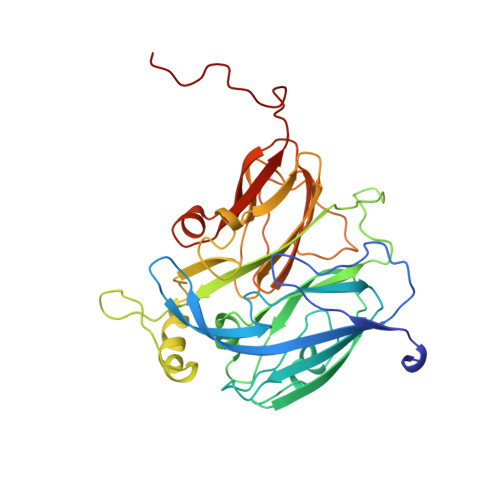The structure of copper-nitrite reductase from Achromobacter cycloclastes at five pH values, with NO2- bound and with type II copper depleted.
Adman, E.T., Godden, J.W., Turley, S.(1995) J Biol Chem 270: 27458-27474
- PubMed: 7499203
- DOI: https://doi.org/10.1074/jbc.270.46.27458
- Primary Citation of Related Structures:
1NIA, 1NIB, 1NIC, 1NID, 1NIE, 1NIF, 2NRD - PubMed Abstract:
High resolution x-ray crystallographic structures of nitrite reductase from Achromobacter cycloclastes, undertaken in order to understand the pH optimum of the reaction with nitrite, show that at pH 5.0, 5.4, 6.0, 6.2, and 6.8, no significant changes occur, other than in the occupancy of the type II copper at the active site. An extensive network of hydrogen bonds, both within and between subunits of the trimer, maintains the rigidity of the protein structure. A water occupies a site approximately 1.5 A from the site of the type II copper in the structure of the type II copper-depleted structure (at pH 5.4), again with no other significant changes in structure. In nitrite-soaked crystals, nitrite binds via its oxygens to the type II copper and replaces the water normally bound to the type II copper. The active-site cavity of the protein is distinctly hydrophobic on one side and hydrophilic on the other, providing a possible path for diffusion of the product NO. Asp-98 exhibits thermal parameter values higher than its surroundings, suggesting a role in shuttling the two protons necessary for the overall reaction. The strong structural homology with cupredoxins is described.
Organizational Affiliation:
Department of Biological Structure, University of Washington, Seattle 98195-7420, USA.















